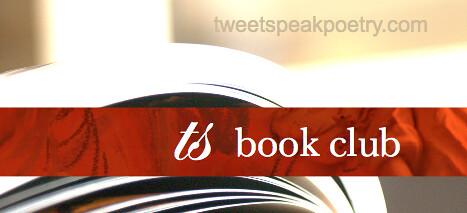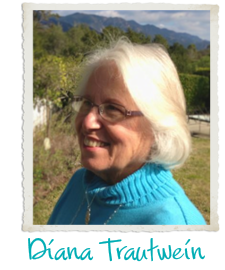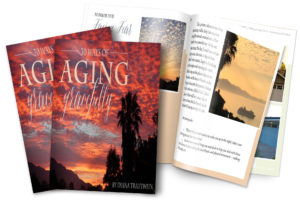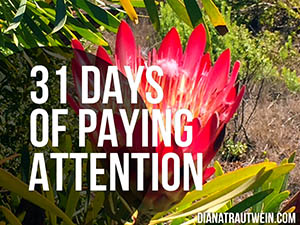
a place for pondering life, faith, family

Joining once again with the gang over at Tweetspeak, hoping they will not give up on me just yet.
You can check out the other posts in this collection by going here:
All my life, I’ve been a reader – I.love.books – all kinds of books. And some of them have been formational for me, sometimes in ways I didn’t fully recognize at the time I initially read them.
Today, I’m talking about one of those books – over at Sheila Seiler Lagrand’s place.
This one I read almost 50 years ago – can you imagine?
And I just downloaded it to my Kindle and read it again.
Come on over and find out why it was such a key piece of my own story.
Sheila is a most gracious hostess and I’m sure you’ll find lots of other interesting stuff to read while you’re there. You can find her by clicking here.
As a matter of principle, I seem to be late a lot. And I am very late in joining Lyla over at TweetSpeak Poetry for their book club reading of L.L. Barkat’s wonderful small volume on the craft of writing and the life of the writer. It’s called “Rumors of Water,”and I cannot encourage you strongly enough to read this one through. Mark it up, read it again, live with it a while – if you ever have occasion to write anything at all, ever, her words are wise and truly helpful. This is the last week and it’s on the last two sections of the book: “Glitches” and “Time.”
“Our hypothesis leads us to the radical suggestion that the critical difference between the thinking of humans and of lower animals lies not in the existence of consciousness but in the capacity for complex processes outside of it.”
“Epistemology is the study of how we know what we know. Epistemological modesty is the knowledge of how little we know and can know. Epistemological modesty is an attitude toward life…built on the awareness that we don’t know ourselves. Most of what we think and believe is unavailable to conscious review. We are our own deepest mystery…And yet this humble attitude doesn’t necessarily produce passivity. Epistemological modesty is a disposition for action. The people with this disposition believe that wisdom begins with an awareness of our own ignorance…that there is no one method of solving problems…most of what [we] know accumulates through a long and arduous process of wandering…the wanderer endures uncertainty…possessing what John Keats called negative capability, the ability to be in ‘uncertainties, mysteries, doubts, without any irritable reaching after fact and reason.'” quotes taken from pages 245-248
(The book we are studying, in case you are joining in after the first two installments – which can be found on my blog here for the first segment, covering the introduction and the first 3 chapters, and here, for chapters 4-6, is David Brooks’ book, The Social Animal: the Hidden Sources of Love, Character and Achievement. The prime point of discussion begins with the wonderful writing and observations of Laura Boggess over at The High Calling. This was a birthday week for me, so I am very late in contributing to the discussion and, as a disclaimer, I must admit that I have not yet read any of the other blogs, including lovely Laura’s. That shall be remedied anon, I promise!)
“If you want to get a sense of the number of potential connections between the cells in Harold’s brain, contemplate this: a mere 60 neurons are capable of making 10(to the 81st power) possible connections with each other. (That’s 1 with 81 zeroes after it.) The number of particles in the known universe is about one-tenth of this number.”
“…embody our experiences and in turn guide future action. They contain the unique way each of us carries himself in the world, the way we walk, talk, and react. They are the grooves down which our behavior flows. A brain is a record of a life. The networks of neural connections are the physical manifestation of your habits, personality, and predilections. You are the spiritual entity that emerges out of the material networks in your head.”
“Of course, Ms. Taylor wanted to impart knowledge, the sort of stuff that shows up on tests But within weeks, students forget 90 percent of the knowledge they learn in class anyway. The only point of being a teacher is to do more than impart facts; it’s to shape the way students perceive the world, to help a student absorb the rules of a discipline. The teachers who do that get remembered. She didn’t so much teach them as apprentice them…She forced them to make mistakes. The pain of getting things wrong and the effort required to overcome error creates an emotional experience that helps burn things into the mind. She tried to get students to interrogate their own unconscious opinions…She also forced them to work…She pushed. She was willing to be hated. Ms. Taylor’s goal was to turn her students into autodidacts. She hoped to give her students a taste of the emotional and sensual pleasure discovery brings – the jolt of pleasure you get when you work hard, suffer a bit, and then something clicks. She hoped her students would become addicted to this process. They would become, thanks to her, self-teachers for the rest of their days.”
And then there was touch…As Harry Harlow’s famous monkey experiments suggest, babies will forgo food in exchange for skin…They’ll do it because physical contact is just as important as nourishment for their neural growth and survival…Human skin has two types of receptors. One type transmits information…[about]…objects. But the other type activates the social parts of the brain. It’s a form of body-to-body communication that sets off hormonal and chemical cascades, lowering blood pressure and delivering a sense of transcendent well-being. pg. 33
Smart girl, our soon-to-be-two Lilly.
Rife with tidbits like this, David Brooks’ new book, “The Social Animal,” is a fascinating, often hilarious, always insightful collection of a lot of different scientific information gathered together in an engaging story-telling format.
What has been most interesting to me thus far is the number of parallels between what hard science is discovering in laboratories and guided studies and what early psychologists – most especially Carl Jung – discovered early in the 20th century by doing lots and lots of talk therapy. These words from page 32 sound an awful lot like what Jung called the ‘collective unconscious:’
The truth is, starting even before we are born, we inherit a great river of knowledge, a great flow of patterns coming from many ages and many sources. The information that comes from deep in the evolutionary past, we call genetics. The information revealed thousands of years ago, we call religion. The information passed along from hundreds of years ago, we call culture. The information passed along from decades ago, we call family, and the information offered years, months, days, or hours ago, we call education and advice. But it is all information, and it all flows from the dead through us and to the unborn. The brain is adapted to the river of knowledge and its many currents and tributaries, and it exists as a creature of that river the way a trout exists in a stream. Our thoughts are profoundly molded by this long historic flow, and none of us exists, self-made, in isolation from it.
At the end of this week’s assignment, a lovely, and by far, the most poignant small piece of story-telling in this volume, came from Samuel Taylor Coleridge.
So sweetly, these words served to underscore that ‘aha!’ moment I’d had earlier about our Lilly and her need to be skin-to-skin.
Coleridge’s three-year-old son once woke in the night,
begging his mama to come in and touch him.
Perplexed, his mother wondered why.
“I’m not here,” the boy cried.
“Touch me, Mother, so that I may be here.“
You are here, sweet Lilly.
You are most definitely here.
Thanks be to our good God for that wondrous truth.
A good story well-told is a powerful thing. Story can bypass the regular channels of intellect and observation, cutting to the chase of emotional and spiritual connection; it can provide beauty, relief, even epiphany. Because story, like all good art, can touch the soul as well as engage the mind. Story can speak of things eternal – like hope and joy and love. And the best story-telling can do all of that in and through the nitty-gritty of real life, never ignoring or denying the pain, suffering, failure and struggle that mark our days on planet earth.
I began to understand these truths most deeply while our son-in-law was in the midst of an extremely difficult journey that led to his death three years ago. Watching him suffer, and watching our daughter and their three sons share in that pain, there were days when I simply could not imagine how life could ever again be good and rich. And on those days, I turned to story to help me – to remember that suffering is not all there is, that death does not have the final answer, that the power of Love is stronger than anything else in this life.
And the story-telling that spoke most clearly into that time of darkness was romance. Good romance, not dimestore fantasy. I read and/or watched everything that Jane Austen ever wrote and the BBC ever produced from that writing. I lost myself for a few minutes or a few hours; I let the harsher realities of life sit in the background for a little while. And I allowed myself to enter into those stories of trial and error, of personalities rubbing against each other in misunderstanding and false expectation. And most especially, I celebrated the resolution that always came at the end, when clarity and sanity were recovered and Mr. Darcy or Edward Ferrar or Mr. Knightley spoke their hearts and found reward as Elizabeth Bennett and Elinor Dashwood and Emma Woodhouse happily said, ‘Yes.’
Now I add Michael Kent to the list. And Sarah Hughes. “The Dancing Priest,” by Glynn Young, is a romance for today, a tale very well-told indeed, and a beautifully wrought reminder that, “God is not dead nor doth he sleep.” I suppose this story is to be categorized as ‘Christian fiction.’ But for me, this book far out-classes most of what I’ve read in that genre. (Admittedly, my sample is small.) It does have specific references to conversion (for this is a love story on multiple levels) and uses some of the lingo of the evangelical world here and there. But basically, this is a rousing good romance, period. A great read for just about anyone, Christian or not. A great story that is told through characters who are complex and interesting, and settings that vary widely. The lead players are each loaded with back-story and fascinating friends and family, all of whom add depth without distraction.
I had the wonderful experience of reading this story aloud as my husband and I took long car trips over the last few weeks. We were both hooked immediately and looked forward to turning on the Kindle whenever we set the cruise control. If I had to guess, I’d say that at least a dozen times, I had to stop reading for a moment to control tears. The story is that gripping, that real.
And here’s my armchair analysis of why that happened: this story, this romance, is a brilliant reflection of the Great Love Story that centers our universe, our life. For that’s what the Christian faith surely is – the greatest love story ever told. And those of us who follow after Jesus find ourselves – even in the middle of our messiness or our pain – we find ourselves caught in the grip of a rousing good romance: the God of the Universe, the One who took the downward journey to Bethlehem, who walks with us through the good and the bad, the beautiful and the messed-up – that God of very God waits for each of us to say, ‘Yes.’
“The Dancing Priest,” captures the imagination and the heart; it tells a beautiful, complex story that is just plain fun to read. At the same time, this very particular story mirrors for us The Story that claims and centers us as human persons. We who are created in the image of God, who are called into relationship, who are wooed and won, restored and rescued by the lover of our souls. Read it – I promise you, this romance will grab you and not let go.
Picture legend:
Top: The California coastline, just north of Julia Pfeiffer State Park on Highway One, surely one of the most romantic views in the entire world.
Middle: The chapel at the New Camaldoli Hermitage, two miles above highway one near Lucia, CA.
Bottom: the reflection of the ‘trinitarian chandelier’ in the same chapel, shining up from the stone floor.
 A retired-part-time-pastor-learning-to-be-a-spiritual-director with a family I adore sensing an increasingly urgent call to write-my-life-down, to preserve my sanity and create some space to breathe. Read my complete profile.
A retired-part-time-pastor-learning-to-be-a-spiritual-director with a family I adore sensing an increasingly urgent call to write-my-life-down, to preserve my sanity and create some space to breathe. Read my complete profile.Sign up for *More Wondering. . . * a monthly personal letter from Diana to you, available only to email subscribers. As thanks, receive a copy of Living the Questions, an 8-chapter ebook wrestling with some of the hard questions of life and faith.





Copyright © 2025 · Prose on Genesis Framework · WordPress · Log in